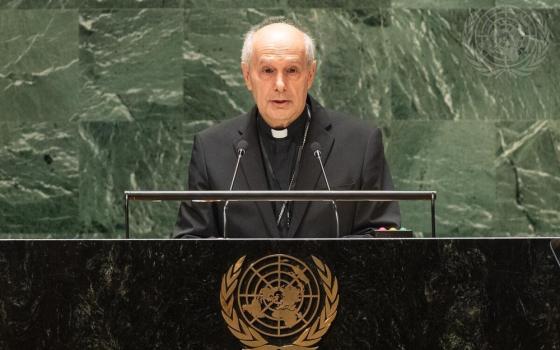Even austerity, as it turns out, comes at a price. Pope Francis provided proof of the point Sunday with his first (and perhaps only) Angelus address this year at his summer residence in Castel Gandolfo, nestled in the hills above Lake Albano 15 miles outside Rome.
Already renowned for his sobriety and restraint, Francis has decided he won't vacation in the palace outside Rome that popes have been using as a summer retreat for the last 400 years, a massive complex that's actually bigger than the Vatican City State by 400,000 square feet and boasts some of the finest gardens in Europe.
Instead, the pontiff will remain in Rome and on the job this summer, except for his trip to Brazil next week for World Youth Day. While that bit of self-denial arguably sets a good example, especially for a pope who recently admonished clergy that they shouldn't lust after expensive cars and clothes, it also comes at a price for the people of Castel Gandolfo, a small community of roughly 9,000 whose economy is heavily dependent upon their most famous summer resident.
For Castel Gandolfo, the harsh reality boils down to this: No pope means no show, and no show means far fewer people filling hotels, restaurants, gift shops and museums.
A typical Sunday Angelus or Wednesday general audience at Castel Gandolfo draws in the neighborhood of 5,000 to 10,000 people, some of whom are part of pilgrimage groups that spend at least one night in a local hotel. Many of those pilgrims eat at least one meal in local restaurants, and many also pick up souvenirs in local shops. Most estimates say Castel Gandolfo earns more in tourist income during the month and a half the pope usually stays during the summer than in the entire rest of the year combined.
On background, shop and restaurant owners have expressed concern about the impact of the pope's no-show, especially when combined with the broader crisis in the eurozone and an uneven performance by the Italian economy.
To be clear, Castel Gandolfo is a scenic locale that would draw a steady flow of visitors even without the pope. It was the setting for the rowing events of the 1960 Rome Olympics, and people still come out to boat on Lake Albano, to dine in one of the leafy trattorias overlooking the lake, and to visit the Etruscan and Roman remains that dot the area.
That said, there's no doubt that primetime in Castel Gandolfo comes when the pope's around, and this summer, primetime will be measured in hours rather than weeks.
Francis traveled to Castel Gandolfo on Sunday as part of the regular rounds a new pope makes to formally introduce himself and take possession of various papal facilities. It's the first time he's gone to the summer palace since shortly after his election, when he traveled by helicopter to greet Benedict XVI, who stayed there while renovations to his new quarters on Vatican grounds were underway.
Reeling from the news that Francis won't be staying, Mayor Milvia Monachesi and the other officials of Castel Gandolfo urged everyone to show up Sunday in the Piazza della Libertà, the main square that faces the palace, to make a good impression.
Francis returned the favor, telling the crowd how happy he was to be in "this beautiful town." He also joked that since the area was celebrating the feast of its patron saint tomorrow, he wished he could send along a cake.
In his ongoing insistence on being pope his own way, Francis came out the front door of the palace to greet the crowd and then spoke from a small lectern in the doorway rather than from the balcony typically used by popes. Most recently, the balcony was where Benedict XVI offered his final farewell as pope Feb. 28.
The pope devoted his brief address mostly to a reflection on the parable of the Good Samaritan. He extolled St. Camillus de Lellis, a 16th- and 17th-century priest and founder of the "Clerks Regular, Ministers to the Sick" as an example of the parable's spirit. He also asked for prayers for World Youth Day in Rio de Janeiro and expressed his solidarity with the church in Ukraine that's commemorating the 70th anniversary of a massacre in Volinia, in which an estimated 30,000 to 60,000 Poles were slaughtered by a Nazi-allied Ukrainian militia and 2,000 Ukrainians were killed in retaliation.
Before the pontiff even arrived in Castel Gandolfo, the community issued its greeting.
"We are immensely happy to see you and to listen to your words for the first time at Castel Gandolfo," the greeting read. "But at the same time we feel you're already one of us, part of our community and our lives, a person already known and loved."
"In the liveliest hope that the beauty and tranquility of our sites will conquer you and bring you back to us quickly," the greeting continued, "we assure you that we'll always be close to you in your mission of evangelization."
Monachesi also tweeted to mark the occasion: "On Sunday, everybody come to the piazza at noon to welcome Pope Francis ... hoping that he comes back soon!"
For the elected leader of Castel Gandolfo, naturally, that's one part pious wish and one part sound fiscal policy.
It remains to be seen if Francis will take him up on the invitation. In any event, Sunday's lesson would seem to be that when a pope opts for austerity, sometimes he isn't the only one who ends up tightening the belt.
[Follow John Allen on Twitter: @JohnLAllenJr]




